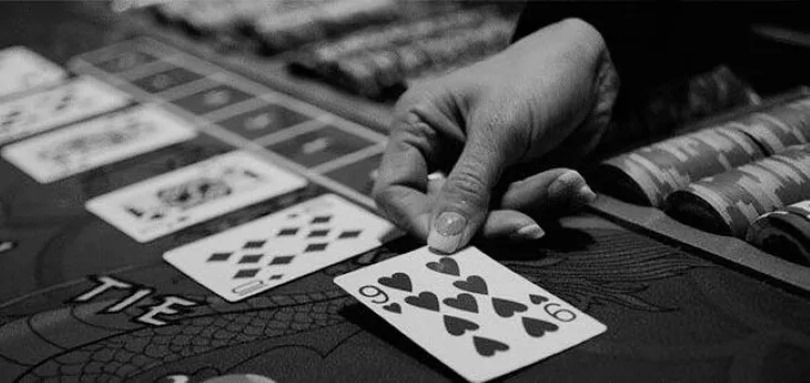تاريخ القمار

The History of Baccarat: A Journey from Ancient Epochs to Modern Casinos
From its alleged Chinese and Ancient Roman roots, Baccarat traverses a fascinating path through Medieval Italy and France, eventually culminating in today’s technologically advanced online casinos. Here, we present an in-depth account of the evolution of Baccarat.
A Tryst with the Origins of Baccarat: Chinese Games and Ancient Roman Rituals
Baccarat, a timeless and globally revered card game, veils its origins in mystery. With the first written account dating back to the 19th century, conjectures of its inception are largely speculative, yet intriguing.
An intriguing theory proposes a link between Baccarat and the non-card game Pai Gow, originating from ancient China and played with tiles instead of cards. A parallel is drawn between the semantic interpretation of Pai Gow (‘make nine’) and the significance of nine as the highest score in Baccarat. However, it lacks concrete historical evidence.
Another school of thought connects Baccarat with Ancient Roman rituals. It suggests that the priestesses of the Vestal Virgin would cast a dice to foresee their destiny, where a score of 8 or 9 symbolized the high priestess’ future. Nevertheless, this explanation fails to provide a satisfactory reasoning behind Baccarat’s evolution as a card game.

The Dawn of Baccarat in Italy
Marco Polo’s return to Italy in the late 13th century marked a significant milestone in the history of Baccarat. The game’s earliest description as a “play of cards at tables” appeared in a French manuscript from the 1330s.
The creation of Baccarat can be traced back to the humble beginnings of card games in Italy, primarily influenced by Tarrochi – a card game prevalent in the 1300s. Felix Falguiere, an Italian man, is often credited with the inception of Baccarat, employing Tarot cards. The game Le Her and Macao, both played to the total of nine, are also deemed as potential forerunners of Baccarat.
Transition to France: A Luxurious, Albeit Clandestine Affair
The introduction of Baccarat in France is attributed to soldiers returning from Italian conflicts during the 1490s. Its popularity soared among the French nobility, leading to the development of باكارات en Banque en Banque and Chemin de Fer during the Napoleonic era. Despite gambling becoming illegal in 1837 under Louis Phillip, Baccarat found a safe haven in secret gambling houses.
The advent of Baccarat in America is usually dated back to 1911, but period newspaper publications indicate an earlier inception. An article in the New York Times from 1871 narrates the allure of the Baccarat board at a Club-house, suggesting its arrival in the United States decades prior.
Baccarat in America: A Gradual Rise to Fame
The late 19th century was marked by Baccarat’s modest inception in America. However, the game initially struggled to secure a foothold due to competition from popular native banking games like Blackjack and Craps. It remained somewhat obscure in the mainstream gambling scene until the mid-20th century.
The turning point came in 1959 when Baccarat made its Las Vegas debut at the Sands Casino, brought to the stage by Tommy Renzoni, a renowned casino executive. Inspired by Chemin de Fer, Renzoni combined its rules with the less complex Punto Banco, a variant popular in Cuba. This streamlined version was better suited to the American players’ taste and quickly gained traction.
The shift from European-style Baccarat to the modern, simpler version played in America happened swiftly. The fast-paced action and house-banked nature of the game eventually struck a chord with the American gamblers. Baccarat finally stepped out of the shadows and into the bright lights of the casino floor, becoming a favorite amongst high-rollers.

Baccarat in the Digital Age: A Leap into Online Casinos
In the 21st century, the advent of online casinos dramatically changed the gambling landscape, introducing a new chapter in Baccarat’s history. The game, once reserved for the elite, was now accessible to players worldwide at the click of a button.
With the rise of online casinos, Baccarat evolved to cater to the digital era. Traditional Baccarat’s opulent aesthetics seamlessly translated into the virtual world, captivating players with immersive graphics, live dealers, and real-time multiplayer sessions. Variations of the game were developed to keep players engaged, including Mini Baccarat, Punto Banco, and سبيد باكارات, each adding a unique spin to the classic rules.
Baccarat’s journey from ancient epochs to the modern, digital world is a testament to the game’s enduring appeal. Its transformations over the centuries reflect the evolving tastes of players, while its timeless allure draws gamblers from across the globe. As technology continues to evolve, the future of Baccarat promises to be as captivating as its past.
الخاتمة
The journey of Baccarat is a compelling saga that unfolds over centuries, spanning across continents and civilizations. From its origins in the Middle Ages to its evolution in the digital age, Baccarat has continued to adapt and thrive, mirroring the ever-changing dynamics of the gaming industry. Despite its humble beginnings, the game overcame challenges and found its place in the hearts of gamblers, from the affluent salons in France to the dazzling casinos in Las Vegas, and ultimately, to the virtual realm of online gaming.
Baccarat’s story underscores its timeless appeal and adaptability. It is not merely a game; it is a symbol of endurance and evolution that continues to captivate and challenge players worldwide. As we move further into the digital age, Baccarat’s journey is far from over. With advancements in technology and gaming trends, the game is poised for further transformations, promising an exciting future for this historical pastime. Whether you’re a high-roller or a casual player, Baccarat’s rich history and enduring charm ensure it remains a crucial part of the global gaming landscape.